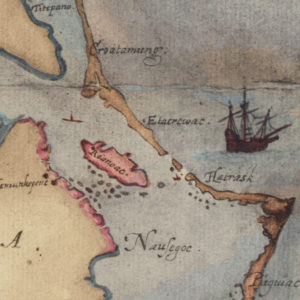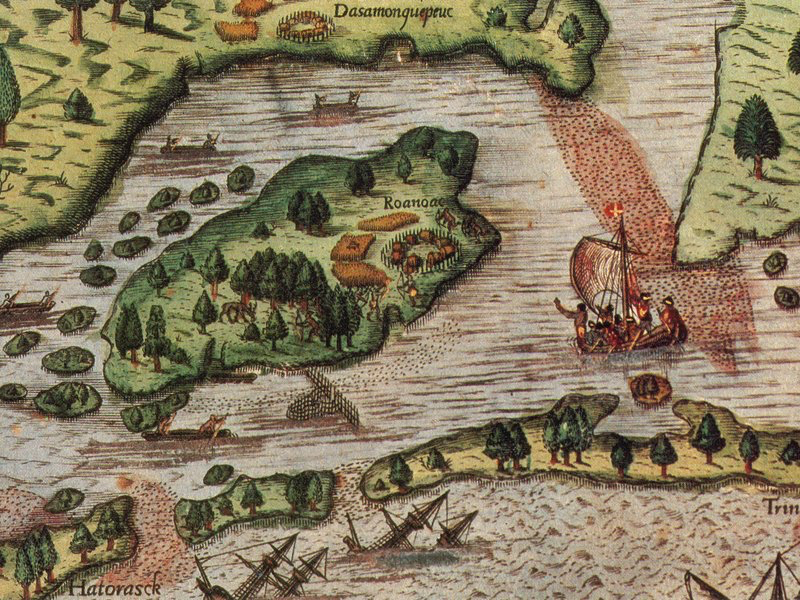All that glitters is not gold
The mystery of the Lost Colony of Roanoke Island remains shrouded in the clouds of time. A ring that archeologists believed was an important lead in the search the fate of the colonists has been shown to be an artifact from a later date. Andrew Lawler writing for Smithsonian Magazine tells the story.

“It seemed too good to be true. And it was.
Nearly 20 years ago, excavators digging on North Carolina’s remote Hatteras Island uncovered a worn ring emblazoned with a prancing lion. A local jeweler declared it gold—but it came to be seen as more than mere buried treasure when a British heraldry expert linked it to the Kendall family involved in the 1580s Roanoke voyages organized by Sir Walter Raleigh during Elizabeth I’s reign.
The 1998 discovery electrified archaeologists and historians. The artifact seemed a rare remnant of the first English attempt to settle the New World that might also shed light on what happened to 115 men, women, and children who settled the coast, only to vanish in what became known as the Lost Colony of Roanoke.”
[box type=”bio”] Sometimes what we hope is true and what the facts reveal don’t match, as this article from Smithsonian Magazine explains about the Lost Colony.[/box]
